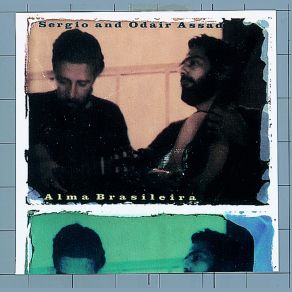Alma Brasíleira / Alma Brasileira
Download links and information about Alma Brasíleira / Alma Brasileira by Odair Assad, Sergio. This album was released in 1988 and it belongs to World Music, Latin genres. It contains 15 tracks with total duration of 51:13 minutes.

|
|
|---|---|
| Artist: | Odair Assad, Sergio |
| Release date: | 1988 |
| Genre: | World Music, Latin |
| Tracks: | 15 |
| Duration: | 51:13 |
| Buy it NOW at: | |
| Buy on iTunes $9.99 | |
| Buy on Amazon $9.49 | |
Tracks
[Edit]| No. | Title | Length |
|---|---|---|
| 1. | Cantiga de Cego | 1:15 |
| 2. | Baiao Malandro | 4:37 |
| 3. | A Lendo do Caboclo | 3:28 |
| 4. | Jobiniana No. 1 | 5:11 |
| 5. | Capoeira | 0:45 |
| 6. | Choro de Mae | 6:01 |
| 7. | Serie de Arco | 3:51 |
| 8. | Toccata Em Ritmo de Samba | 3:18 |
| 9. | Alma Brasíleira | 4:44 |
| 10. | Martelo | 0:40 |
| 11. | Pixinguinha | 5:09 |
| 12. | Suite Brasíleira: Baiao | 3:53 |
| 13. | Praiana | 1:39 |
| 14. | Frevo | 2:52 |
| 15. | Suite Brasíleira: Cancao | 3:50 |
Details
[Edit]The Assads' extraordinary performance, extensively awarded internationally, is credited by the fact that by being brothers they received the same education and had such mutual understanding. In fact, it is hard to match the duo's precision in the attacks, dynamics, and expression — even harder when the subject is Brazilian music with its intricate rhythms.
In this 1988 release for the Elektra/Nonesuch label, the Assad brothers interpret wonderfully a sophisticated set of Brazilian composers that goes from classical Villa-Lobos to popular Wagner Tiso, from erudite Marlos Nobre to the Brazilian jazz proponent Hermeto Pascoal, from the classically trained popular composer Egberto Gismonti to the classically trained popular composer Radamés Gnattali, and they even play Sérgio Assad's compositions. This seems to be the subliminal message: constant labeling of things "classical" and "popular" serves no useful purposes. They couldn't be more faithful to the spirit of the masters performed by them: Villa-Lobos, Gnattali, and Gismonti all supported the same ideals throughout their lives.
With exciting rhythmic mastery, exploring to the limits the swinging spirit of Brazilian music in a sophisticated setting, they met the highest standards of expression in a broad palette of resources that range from the meditative to the utterly aggressive, though never abandoning the classical proportions of the ideal sound — unless in the percussive strokes over the violão's (acoustic guitar) soundboard.